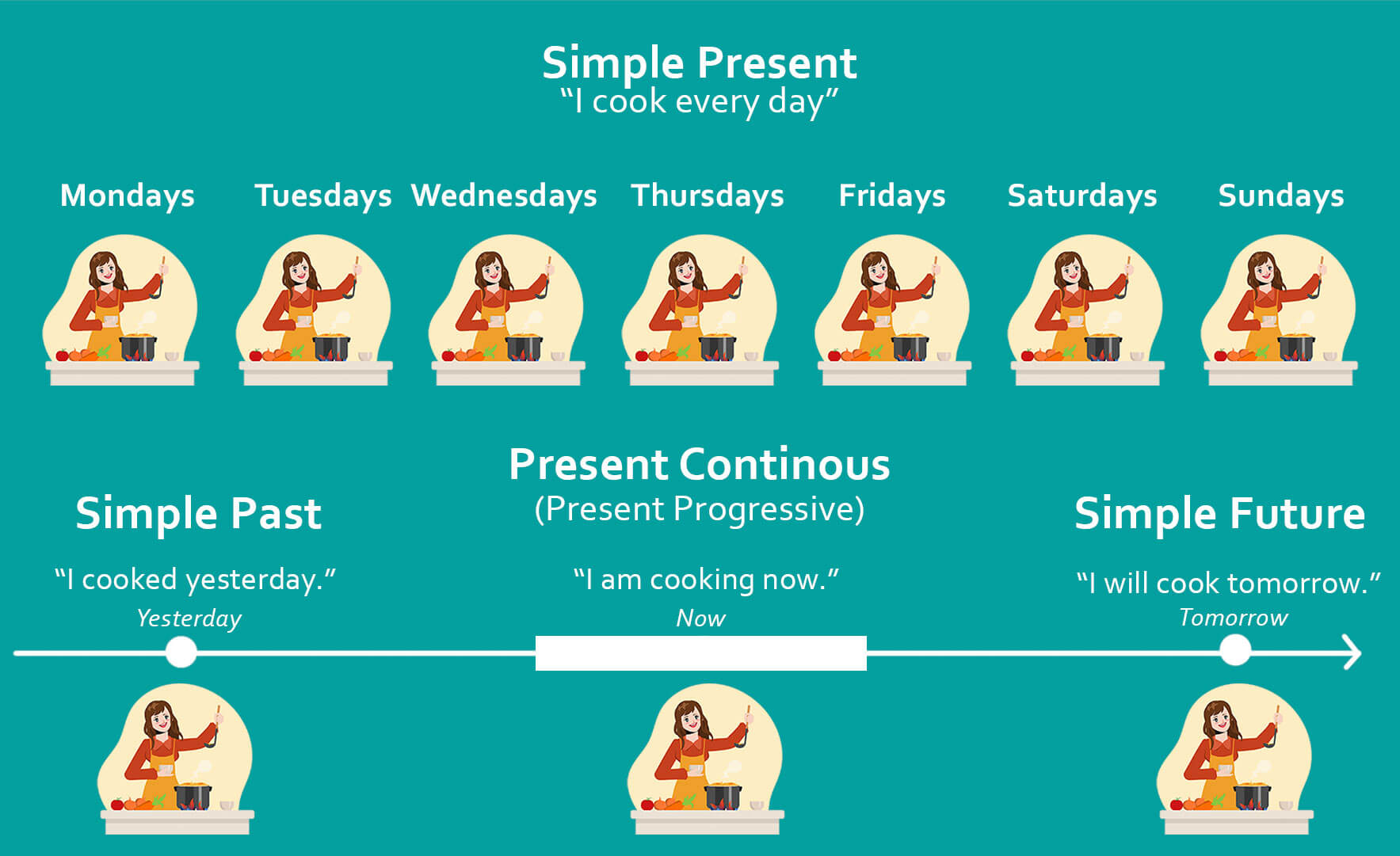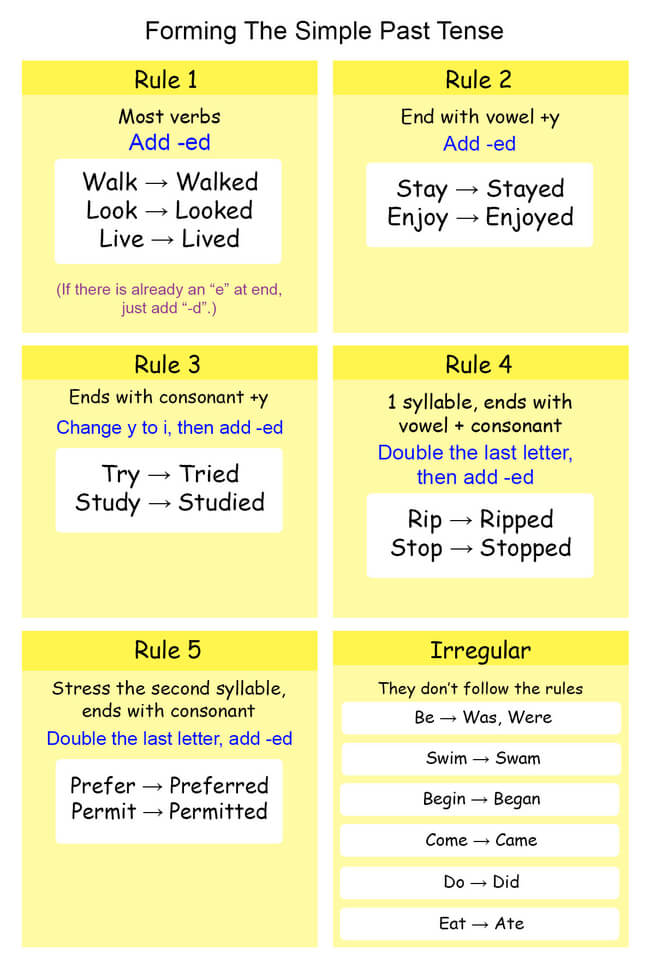Simple Past Tense
- Simple Past tense is used to indicate completed actions in the past.
- The past tense of a verb is formed by adding -ed at the end of a verb.
- There are some special rules for some verbs. Irregular verbs don't follow any rules.
- A sentence in simple past has the form: Subject + verb in past tense form (+ other words)
The simple past tense, also known as the past simple or just simple past, is used to talk about actions that happened in the past.
What's Simple Past Tense?
We use the simple past tense to talk about one of the following:
1. Completed actions in the past.
2. Past habits or states
3. Series of past actions or events
4. Past facts

What's Simple Past Tense?
The Simple past tense is formed by using the past tense form of the verb. To form the past tense form of a verb, we just add -ed for most verbs.
For some verbs, the rules are more complex. See the chart, below.

Rule 1: For most verbs, add -ed. (walked, looked, lived)
Rule 2: For verbs ending with a vowel + y, add -ed. (stayed, enjoyed)
Rule 3: For verbs ending with a consonant + y, change y to i, then add -ed. (tried, studied)
Rule 4: For verbs with 1 syllable and ending with a vowel + consonant, double the last letter and add -ed. (ripped, stopped)
Rule 5: For verbs with stress on the 2nd syllable and ending with a consonant, double the last letter and add -ed. (preferred, permitted)
Irregular verbs don't follow any rules. (went, swam, began, came, did, ate)
Forming a Sentence in Simple Past Tense
We use the form: Subject + verb in past tense form + object or other words.
Example: I ate a tomato yesterday.
Examples:
-
I bought a new car last year.
Subject ("I") + verb in past tense ("bought") + object ("a new car")
-
They arrived late last night.
Subject ("They") + verb in past tense ("arrived")
-
I played football yesterday.
Subject ("I") + verb in past tense ("played") + object ("football")
Pratique este tópico com o AI English Tutor
AI English Tutor irá lhe ensinar a gramática e praticá-la com você em formato de conversação. Além disso, mais de 100 questões práticas sobre este tópico para consolidar sua compreensão.
Experimente ALULA gratuitamente em seu telefone ou tablet








Você tem alguma dúvida sobre esta lição? Pergunte na seção de comentários, abaixo.